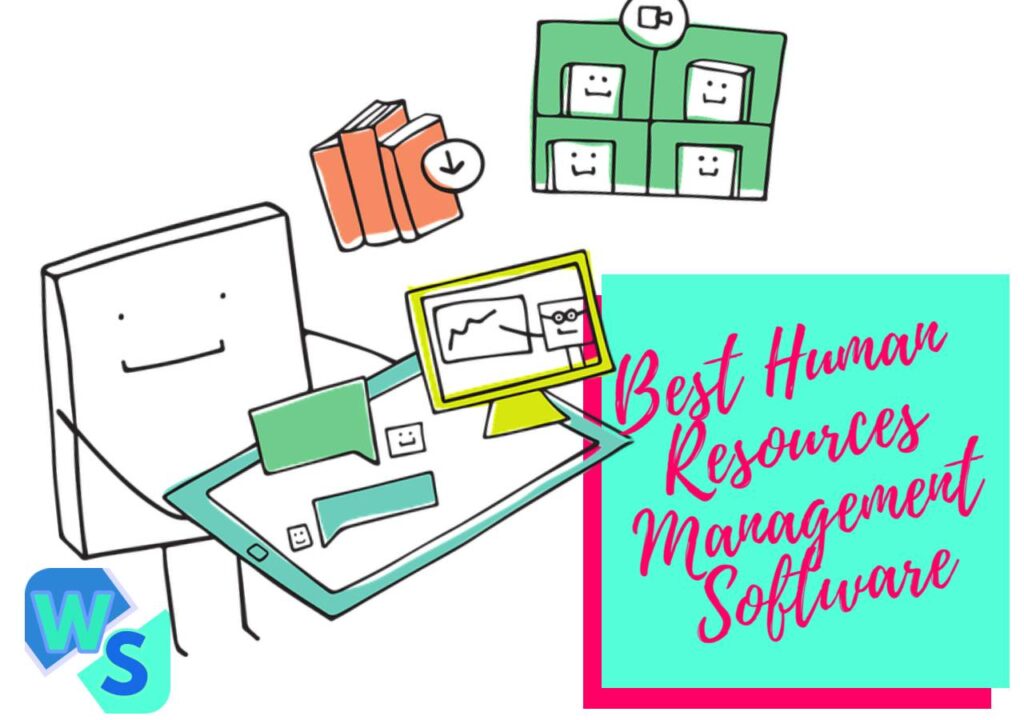Product Development Overview
Turning fresh ideas into products ready for the big-time isn’t just about dreams and doodles. It’s a step-by-step process that can make or break your next great invention. By getting to know the big moments in making a product, you’ll glide through it all and end up with something that’s ready to rock.
What’s the Game Plan?
The product development process has six steps: dreaming up ideas, mapping out what the product should be, mocking it up, designing, checking if it ticks all the boxes, and finally, sending it out into the world. Every step is crucial in turning a brainwave into something you can touch and buy.
| Stage | What It Involves |
|---|---|
| Idea Generation | Dreaming up new product ideas to tackle customer headaches. |
| Product Map | Laying out the strategy and target audience for the product. |
| Prototyping | Making early drafts to bring the idea to life. |
| Initial Design | Refining designs based on the prototype feedback. |
| Testing | Making sure the product works and getting feedback. |
| Launch | Getting the product out there and up for grabs. |
Want to get the full scoop? Check out more on the product development life cycle and see how these steps are all connected.
The A-Team
Pulling off a successful product launch depends a lot on teamwork. You need folks from all sorts of backgrounds working together: product and project managers, design and development peeps, as well as the marketing and sales crews, and of course, the big bosses.
| Who’s Who | What They Do |
|---|---|
| Product Bosses | They’re the ones keeping an eye on the big picture. |
| Project Pros | They make sure nothing’s late or over-budget. |
| Designers | They turn product ideas into something that looks and feels real. |
| Developers | They build the thing and tweak it till it’s right. |
| Marketing Crew | They plan the launch and spread the word. |
| Sales Team | They gather market insights and customer opinions. |
| Top Brass | They make the tough calls and dish out the dough. |
Knowing what everyone brings to the table makes it way easier to smooth-sail through product development. For more tips, dive into resources on new product development strategies and product design and development.
Stages of Product Development
The journey from a bright idea to putting your product out there for the world to see involves a method to the madness. It’s like setting off on a quest to make sure your brainchild doesn’t fizzle out in the cosmos of great-but-never-executed plans. So, here’s a look at a six-part recipe you can follow to whip up a winner.
Idea Generation
Stick your thinking cap on in the idea generation stage. Ideas are like cats – unpredictable but also charming when they show up on your doorstep. You’ll find inspiration all over the place: see what customers need, snoop on what competitors are cooking, or just catch a whiff of trending vibes. The aim? Pile up a heap of half-baked ideas. Tools like market research for product development can be like the flashlight in your idea-mining cave, helping you dig out what customers might actually want.
Product Definition
Once you’ve got a sack full of ideas, it’s time to filter out the dirt from the gold. Enter product definition mode. This is where you pin down what your product is going to be when it grows up. Who needs it? Why should they care? How does it tie back to what you stand for as a biz? Laying down these blueprints gives you the clarity to proceed with more purpose. Check out product positioning strategies if you’re looking to up your game here.
Prototyping
Welcome to the prototyping pit-stop. Think of this phase as akin to trying on a new outfit before committing to wearing it on the big day. You get to tinker with form and function, identifying what works and what doesn’t without blowing your entire budget. It’s like getting to play with clay before permanently etching your design in marble. Feedback from intended users at this point can save you headaches later. Lots of folks use product design and development strategies to nail this part.
Initial Design
Next is the initial design liftoff. Now, you’re converting those early sketches into something solid. This is like drawing a treasure map with all the markers leading to where x marks the spot. You want everything ready and perfect for user testing. Being organized and sticking to a timeline here is your safety net. A product development roadmap might be just what you need to keep those pesky loose threads in line.
Validation and Testing
Roll up your sleeves for validation and testing. This stage is half science, half art, checking your product for reliability, durability, and appeal. You conduct trials, gather feedback, and tweak things until the product’s hitting all the right notes. The aim is to dismiss surprises before your customers find them for you. Using a product development checklist ensures you’re not missing those make-or-break moments.
Commercialization
And finally, it’s showtime with commercialization. This is when you take a big breath, hit the launch button, and off your product sails into the market. You’ll be plotting marketing strategies and figuring how to get it on the shelves where it belongs. And yes, don’t forget to keep an eye on how it’s performing out there. Tweak your approach based on real-world feedback and watch it evolve. We’ve got more on avoiding pitfalls and seizing opportunities in our product launch strategy guide.
With these steps in your arsenal, your product development trek should be less about wandering and more about heading straight toward your goal. Maybe think about some new product development strategies to keep everything exciting and on the up and up.
Importance of Market Research
Grasping the vital role of market research is key when you’re bringing a product to life. Collecting golden nuggets of info about your target crowd and industry gives you an edge that could turbo-charge your business success.
Customer Insights
Digging into customer insights through market research is like having a treasure map to your audience’s heart. It spills the beans on what folks love and how they tick. And with this info, you can nail those big calls during product creation. Through surveys, you get a grip on who’s who in your audience – think along the lines of age, gender, and what kind of dough they’re rolling in (Kantar).
Beyond that, keep an eye on buying habits using surveys, transaction records, and socials. These gems show you when, why, and what people are shelling out cash for, so you can make stuff that hits the mark.
| Insight Type | Description |
|---|---|
| Demographic Data | Lowdown on customer traits |
| Purchasing Behavior | Scoop on shopping habits |
| Customer Satisfaction | Measure of how well you’re hitting the bullseye with customers |
Competitor Analysis
Sizing up the competition through market research is a non-negotiable. Playing your cards right here lets you see the rough patches and roadblocks ahead for your business. By keeping a close watch on rivals, you can spot what they’re nailing and where they’re dropping the ball, giving you a shot to shine.
A good market snoop fest hands over the tools to judge success, beyond just keeping customers happy—think employee vibes and competitor moves (Kantar). Smartly digging into competitors helps polish your product’s stand-out factor.
When you marry customer insights with competitor analysis, you’re set to play the risk game smartly and see market shifts coming. This savvy mindset lets you set up backup plans, dodging any curveballs in product growth. For the full scoop on how to ace market research for product drive, cruise over to our guide on market research for product development.
New Product Development (NPD)
When it comes to rolling new stuff out to folks, New Product Development (NPD) is the key player. It’s all about getting a cool, fresh product from your brain to the store shelf, and there are a few flavors and steps involved to make sure your new thing makes a splash.
Types of NPD
Where does your idea fit? Check out these three main categories:
New-to-the-World Products: We’re talking groundbreaking! These are those never-seen-before kind of things. They open up new playing fields or totally shake up how folks do stuff.
New-to-the-Firm Products: These are fresh to your crew but may already be mingling in the market. It’s like adding a new tool to your shed that helps broaden the horizons.
Additions to Existing Product Lines: Here, you’re building on what you’ve got. Tweak that size, add a spicy flavor, or toss in some nifty features to keep up with what people crave. It’s about riding that brand loyalty wave while giving folks more of what they love.
These NPD types show different ways to mix things up and dive into the market (Maze).
Stages of NPD
Bringing a new product to life? You’ll journey through these stages, ensuring the path from napkin sketch to bustling shelves is as smooth as butter:
| Stage | What’s Happening |
|---|---|
| 1. Idea Generation | Get those creative juices flowing! Think of ideas that solve problems or fill gaps people didn’t know they had. |
| 2. Research | Look around! Dive into data and check out what’s already out there to back up your genius idea. |
| 3. Planning | Plot your course! Craft a vision, lay down the mission, scribble some goals, and map out the way ahead (ProductPlan). |
| 4. Prototyping | Build it, but like, a rough draft. Helps you see what works and what doesn’t. |
| 5. Testing | Grab some guinea pigs (maybe just metaphorically) to try it out, gather feedback, and do a bit of tweaking. |
| 6. Production | Time to get serious. Final touches on the design and crank it out for real. |
| 7. Commercialization | Let the world see it! Push it out there with some slick marketing to spread the word and get those sales. |
Each step’s a brick in your rock-solid foundation, making sure your product not only meets what folks want but also knocks it outta the park. A smart product development roadmap and some savvy new product development strategies will bump up your chances for success. Nail these steps, and not only will your launch rock, but you’ll also have a nice pipeline of fresh products ready for the future.
Product Launch Strategies
Pulling off a blockbuster product launch hinges on nailing the right strategies. This part gives you the low-down on key steps for a slam-dunk debut and how to keep score of your success.
Critical Steps
Launching your product is like the grand finale in the stages of product development. It has to be spot-on. Here’s how to get it right:
- Market Analysis: Get to know who you’re selling to and what your competition’s up to. This helps you shape your moves.
- Set Objectives: Pin down what you want to achieve, be it hitting certain sales numbers or boosting brand buzz.
- Develop a Marketing Plan: Map out your game plan. Decide on channels, messages, and what content will get folks talking.
- Training and Preparation: Make sure your team’s primed and ready, equipped with all they need for the big day.
- Launch Publicly: Bang the drum with a public splash—be it events, social media blasts, or hitting up the press.
- Monitor and Adapt: Keep tabs on how things are going post-launch and tweak your strategy if needed.
If you want a closer look at these steps, check out our in-depth product launch strategy.
Key Success Metrics
To see if your launch hit the bullseye, keep an eye on these vital stats:
| Metric | Description |
|---|---|
| Sales Volume | The count of goodies flying off the shelves after launch. |
| Customer Feedback | The gossip from customer reviews and surveys about what you put out there. |
| Market Penetration | The slice of your target market pie that jumped on board after launch. |
| Brand Awareness | The uptick in brand chatter, website hits, and social buzz during launch. |
| Return on Investment (ROI) | Weighing up the profits against the costs of launching the product. |
Keeping track of these numbers helps you size up the launch, so you can steer future efforts in the right direction. For more on picking the best metrics, check out our product development metrics.
By using these smart strategies and keeping a close eye on your numbers, you’re set to super-charge your product launch, connect with your audience, and smash your goals out of the park.
Agile Product Development
Rapid Iteration Process
Agile product development’s all about thinking on your feet—and quickly. This method keeps you tapping away toward efficiency and keeping up with what your users actually want. You start by cutting down the cycle from dream to reality, releasing updates and changes based on what your users have to say. It’s an endless loop where you plan, act, test, consider, and tweak… then do it all over again. Each spin of the wheel stacks on the last, moving the needle a tick forward every time (ProductPlan; Smartsheet).
| Iteration Cycle | Steps |
|---|---|
| 1 | Planning |
| 2 | Implementation |
| 3 | Testing |
| 4 | Evaluation |
| 5 | Refinement |
This loop means you’re quick on your toes, adjusting to whatever comes your way, and taking user feedback in stride. You can whip up, try out, and perfect ideas faster, cutting down on things that trip users up and boosting how everything works in the end.
Benefits of Agile Approach
Going agile in developing products gives your business a leg up on the other guys out there in the market.
| Benefits | Description |
|---|---|
| Flexibility | You can shift gears fast to meet users’ changing needs. |
| Faster Time-to-Market | Keep the releases coming so you’re out there first. |
| Enhanced Collaboration | Everyone’s on deck—marketing, design, development—all working together like a well-oiled machine. |
| User-Centric | Constant user checks keep you on track, making sure what’s on offer is actually what’s needed. |
| Incremental Improvements | Each spin brings betterment, driven by what users say, shaping up in a top-notch end product. |
Adopting agile lets your team shake things up nonstop, chasing new solutions as you go and making sure your product’s top-shelf material. For an extra dose of strategy, have a peek at our piece on new product development strategies.
Iterative Process in Development
When making products, using an iterative process keeps things fresh and on point. It’s like giving yourself a chance to tweak and twiddle until the final product is just right. Think of it as a cycle where you plan, check what’s happening, build, test it out, and then tweak some more—each spin brings improvements.
Planning and Analysis
This is the ‘put on your thinking cap’ part. Here’s where you set the scene:
- Figure Out What’s Needed: You’ll need to chat with the folks invested in your product to know what they’re dreaming of.
- Stamp Out Clear Goals: Set targets that are as sharp as a freshly sharpened pencil—something you can actually measure.
- Check the Odds: See if the tech and resources you have can actually pull off what you’ve set out to do without burning too much time or cash.
What you do here decides what comes next. Each spin around the cycle lets you redraw the map if you need to, adjusting along the way. It’s like keeping one eye on the road and the other on the GPS while you drive around the corners of the product development life cycle.
Implementing and Testing
Once you’re good with the plan, it’s time to get cracking. Here’s the drill:
- Build: Start small and grow bit by bit.
- Test Run: See if things are humming along smoothly by doing a mix of automated and hands-on tests.
- Feedback Loop: Gather the good, the bad, and the ugly from users to know what’s working and what’s not.
Using iterations means you can keep polishing until the product shines. Take Scrum, for example: these guys do sprints that last two to four weeks where they plan, build, test, and look back (Smartsheet). Feedback and goal shifts are part of the game, and it’s all about hitting those business value targets.
The iterative design keeps you moving. You’re not just sitting around—you’re seeing how people use your product and making it better before any major headaches arise (Smartsheet).
Going this route means you’re able to keep up with what the market wants, shifting gears when needed and scoring big on product outcomes. Want more tips on staying on track? Check out our takes on product development metrics and product design and development.
Design Iteration Strategies
When it comes to whipping up a winning product, fine-tuning through design iterations is the secret sauce. Keeping a finger on the pulse of your audience and rolling with the punches ensures your creation hits the mark. Here are the nuts and bolts: the user feedback loop and the continuous improvement process.
User Feedback Loop
Picture this: you’ve got eyeballs on your product, and you’re itching to know what folks think. The user feedback loop, my friend, is your golden ticket. Who better to spill the beans than the people you’re building for? You gotta rope in your users from the get-go—whether you’re ironing out kinks in a prototype or putting the final polish on your masterpiece.
Here’s how to keep your ears open:
- Surveys: Sling out surveys to get the lowdown on what’s working and what ain’t. Numbers can tell a tale, so trust ‘em.
- Focus Groups: Round up a posse for face-to-face jaw sessions. Dig deep into their feels and thoughts about your crafty creation.
- Usability Testing: Watch and learn as they take your product for a spin—spot the stumbling blocks and make things smoother.
Tapping into user feedback is like stirring the pot—mix it all in to boost your product’s charm and chops. Get on this train now and steer clear of your worst nightmare: a flop at launch. Want more on this user-love stuff? Peep our customer-centric product development article.
Continuous Improvement Process
This one’s about never resting on your laurels. The continuous improvement process is your roadmap for tightening the screws in bits and bobs of your product. Keep an eye on what folks are saying, what’s trending in the grapevine, and steer your tech into fresh waters.
Here’s how to stay on top:
| Step | What to Do |
|---|---|
| Check How You’re Doing | Regularly peek at how your product stands up—find the bits that need some TLC. |
| Gather Thoughts | Get your hands on feedback, whether through surveys or user trials. |
| Tweak Things | Take insights, make the magic happen, and adjust as needed. |
| See the Difference | After rolling out changes, keep tabs on whether you’ve upped customer happiness and product mojo. |
Consider this ongoing tune-up like oiling a machine—it keeps you on track with what folks are digging now and craving next. Continuous improvement isn’t just about keeping afloat; it’s the stream where fresh ideas bubble up. Hungry for how to steer this process? Check out our product development roadmap.
By sticking to these design iteration smarts, you’ll set your product up not just to meet the hype initially but to morph with the times and snag that long-lasting win.




















